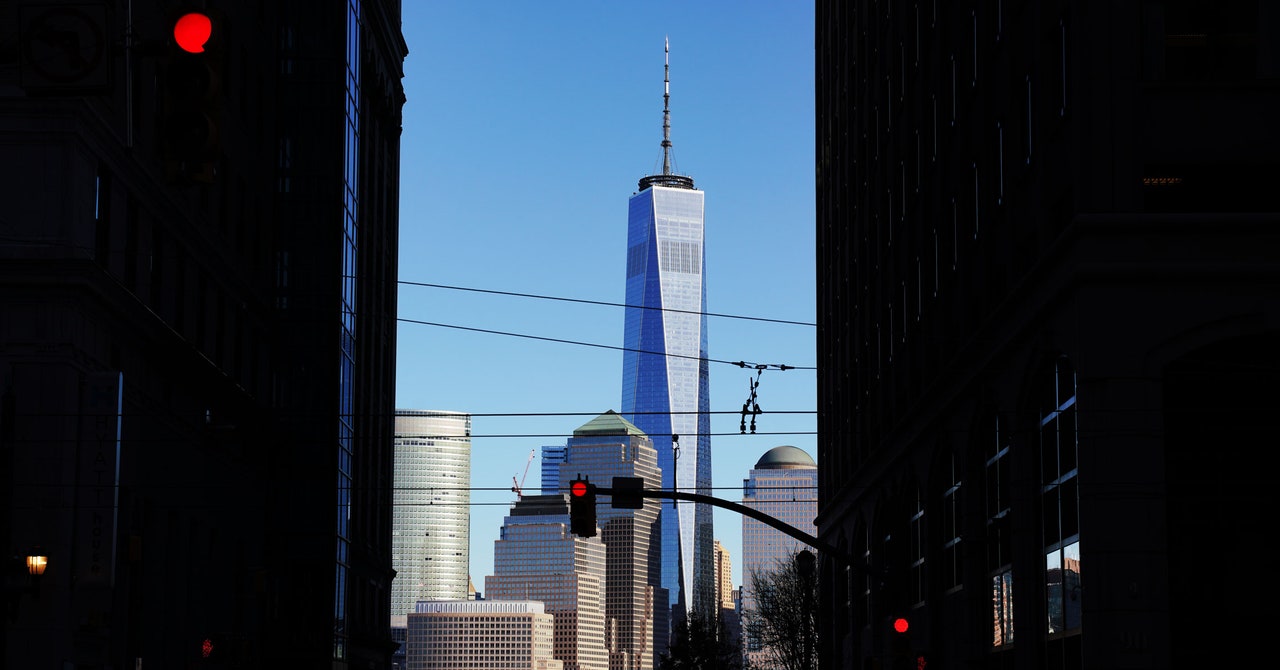
Add up the million or so buildings in New York City, and you get something on the order of 1.7 trillion pounds of weight pressing on the earth—and that’s not even counting all the other infrastructure, like roads and sidewalks. All that weight is deforming the ground, like bowling balls on a memory foam mattress, and causing a type of sinking known as subsidence, when land slowly compresses.
New research finds that, on average, subsidence rates in NYC are between 1 and 2 millimeters per year, but in some places that’s up to 4 millimeters. This may not sound like a worrying figure, but compounded year after year, it’s significant sinking that’s effectively doubling the relative sea-level rise in the metropolis. “You have about 1 to 2 millimeters of sea level going up, while you have 1 to 2 millimeters on average going down,” says United States Geological Survey geophysicist Tom Parsons, coauthor of a new paper describing the research. “It’s a common issue with cities around the world. It appears there’s a definite link between urbanization and subsidence.”
Parts of Jakarta, Indonesia, for instance, are sinking by nearly a foot a year. The San Francisco Bay Area could lose up to 165 square miles of coastline due to a combination of rising seas and subsidence. And just last month, another team of researchers reported finding subsidence up and down the East Coast, as high as 10 millimeters a year in parts of Delaware.
The primary way to cause dramatic sinking is the over-extraction of groundwater, which is the case in Jakarta; drained aquifers collapse like empty water bottles. But in NYC, subsidence depends on the composition of the underlying soil. Long ago, glaciers scraped across the area, depositing sediments. Lakes formed too, depositing still more sediments. So the metropolis is built on a complex mix of materials like clay, silt, and artificial fill, which are more prone to subsidence, as well as sand and gravel, which tend to resist it.
“The softer the soil is, the more likely it’s going to compress under load,” says Parsons. “Even if you don’t build on it, it will still sink under its own weight. But if you build on it, it definitely sinks pretty well.”
Parsons and his colleagues calculated subsidence rates in NYC by first adding up all that urban weight, then combining it with geological data on the composition of different deposits. They also gathered satellite data that measured minute changes in elevation to show which areas have been sinking and which have been relatively stable.
Manhattan skyscrapers might be the heaviest of the city’s buildings, but they’re anchored to underlying bedrock, so they aren’t much of a subsidence problem. The issue is more along the coast, where spongy materials like clay and artificial fill are particularly prone to compression—and where seawater levels are rising.
Subsidence is a hidden vulnerability for coastal cities—models that project how much sea levels will rise in a given area don’t yet take it into account. By 2050, average sea levels in the US will go up a foot, and by that time, 70 percent of the world’s people will be urbanites, up from 56 percent today. In coastal cities, that boom will exacerbate the issue because more people will need to extract more groundwater and will need more buildings and roads, which will in turn increase the pressure on sediments.


